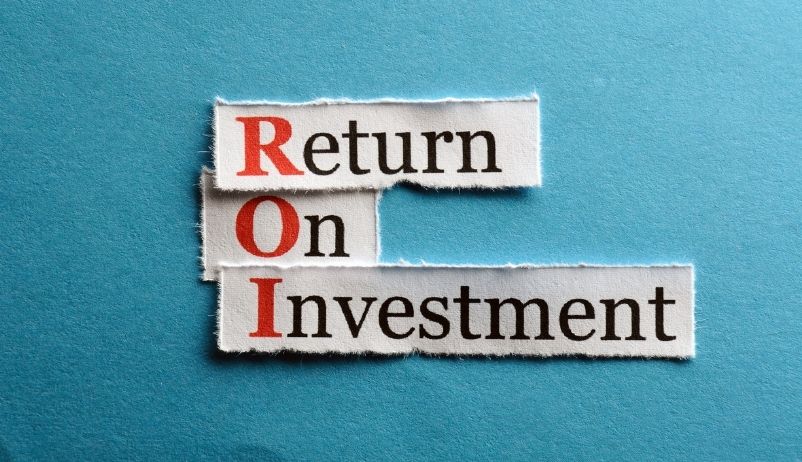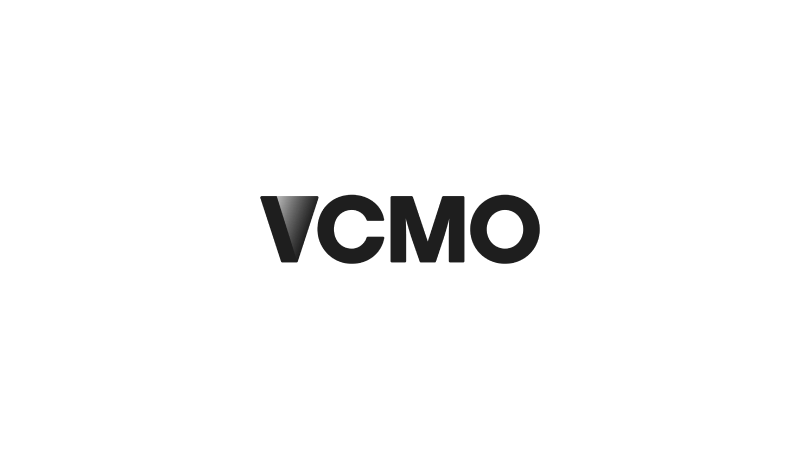From KPIs to enterprise value: measuring the real return on Fractional CMO leadership.
Introduction: Why ROI Matters for Fractional Marketing Leadership
For CEOs, founders, and investors, the decision to bring in a Fractional CMO is ultimately a question of return on investment. Marketing leadership is not a discretionary cost; it is a lever that shapes growth, valuation, and competitive resilience. But in an environment where capital is scrutinised and every initiative must prove its value, the ability to measure ROI with rigour is what transforms a fractional engagement from a tactical solution into a strategic asset.
The challenge lies in definition. ROI in marketing leadership extends far beyond campaign performance. It encompasses revenue contribution, customer acquisition efficiency, operational discipline, and the confidence it brings to boards and investors. Unlike agencies, which may be judged on leads generated, or consultants, who deliver recommendations, Fractional CMOs are measured on outcomes that map directly to enterprise value.
This article explores how to measure the ROI of a Fractional CMO in a way that is both credible and commercially relevant. From defining goals and KPIs, to tracking tangible outcomes, to considering both financial and qualitative returns, it provides a framework that enables decision-makers to evaluate impact with clarity and confidence.
Align ROI with Commercial Outcomes
The first principle in measuring the ROI of a Fractional CMO is alignment. ROI must be framed in commercial terms that the board and investors recognise, not in isolated marketing outputs. A campaign that generates thousands of impressions or clicks is meaningless unless it translates into pipeline growth, revenue, or improved profitability.
Fractional CMOs create value by linking marketing activity to measurable business outcomes. For instance, reducing customer acquisition cost (CAC) while maintaining lead quality directly improves margins. Similarly, shortening the sales cycle accelerates cash flow and strengthens liquidity. Even incremental improvements in conversion rates or retention can compound significantly when assessed at enterprise scale.
Boards also expect marketing ROI to reflect efficiency, not just output. A strong fractional leader ensures that budgets are allocated to the channels and initiatives with the highest return, eliminating waste and holding agencies or internal teams accountable for performance.
By focusing ROI on outcomes such as revenue contribution, CAC:LTV ratio, churn reduction, and margin growth, businesses can demonstrate that marketing leadership is a driver of enterprise value rather than a discretionary spend. This commercial lens is what differentiates a Fractional CMO from tactical providers and secures their place in board-level discussions.
“The most credible ROI cases are those that link marketing directly to commercial performance—pipeline growth, customer acquisition cost, and margin improvement. Anything else risks being dismissed as noise.”
Lydia McClelland - Chartered Fractional CMO, VCMO
State Clear Goals and KPIs
ROI cannot be measured in a vacuum. The foundation of a successful Fractional CMO engagement lies in setting explicit objectives and agreeing on the metrics that will be used to evaluate success. Without this alignment, results risk being debated rather than demonstrated.
Clear objectives should reflect the business context. For a scaleup preparing for investment, the priority may be pipeline growth and improved conversion rates. For an established business in transition, the goal might be margin protection or cost efficiency. By articulating objectives at the outset, the Fractional CMO can design a roadmap that links activity directly to outcomes.
Key performance indicators (KPIs) should be both specific and commercially meaningful. Typical measures include:
- Revenue growth attributed to marketing-led initiatives.
- Customer acquisition cost (CAC), highlighting efficiency of spend.
- Lead generation and quality, with clear definitions for MQLs and SQLs.
- Conversion rates across the funnel, showing improvements in efficiency.
- Operational efficiency, such as reductions in wasted spend or agency duplication.
The strength of this approach lies in accountability. By establishing goals and KPIs upfront, CEOs and investors can evaluate ROI with confidence, ensuring the engagement is managed with the same rigour as any other executive appointment.
Track Tangible Outcomes
Once goals and KPIs are established, the next step is to track the tangible outcomes generated by the engagement. For a Fractional CMO, ROI is not about activity levels or campaign outputs, but about measurable improvements to revenue and efficiency that withstand board-level scrutiny.
A key area is revenue attribution. By implementing attribution models—whether first-touch, last-touch, or multi-touch—a Fractional CMO can demonstrate how marketing initiatives contribute to pipeline and closed-won revenue. This ensures marketing is evaluated as a growth driver, not a cost centre.
Another critical outcome is sales cycle acceleration. Reducing the time it takes to convert leads into customers improves cash flow and strengthens working capital, a metric of particular interest to investors. Even modest improvements in cycle time can have a disproportionate impact on growth trajectories.
Fractional CMOs also deliver ROI through cost savings. This may include renegotiating agency contracts, reallocating spend away from underperforming channels, or embedding automation tools that reduce manual workload. These efficiencies compound over time, ensuring that the cost of the engagement is offset by measurable savings.
By focusing on outcomes such as revenue contribution, sales velocity, and cost efficiency, businesses can quantify the impact of fractional leadership with precision.
Time Horizons of ROI
Measuring the ROI of a Fractional CMO also requires recognising that impact accrues over different time horizons. Some benefits are visible almost immediately, while others strengthen over quarters or even years. Distinguishing between short-, medium-, and long-term ROI helps boards evaluate progress realistically and avoid undervaluing strategic contributions.
In the short term (typically the first 90 days), ROI often comes from efficiency gains and quick wins: clearer reporting, budget reallocation, renegotiated vendor contracts, or more effective demand generation campaigns. These improvements demonstrate momentum and establish credibility.
The medium term (6–12 months) is where marketing systems begin to scale. This might include stronger brand positioning, improved sales enablement, and better conversion rates across the funnel. These outcomes provide a more predictable pipeline and enhance investor confidence in growth projections.
The long term (12–24 months) reflects deeper transformation. Here, ROI is measured in market share gains, enhanced customer lifetime value, and uplift in enterprise valuation. By this stage, the Fractional CMO’s legacy is often seen in the maturity of the marketing function itself—systems, teams, and processes that continue to deliver value long after their engagement.
Recognising these timeframes ensures ROI is judged with both immediacy and strategic perspective.
“Boards must view marketing ROI on multiple horizons. Quick wins build momentum, but the real test lies in the systems and brand equity that sustain enterprise value over years, not weeks.”
Rachael Wheatley - Chartered Fractional CMO, VCMO
Utilise the ROI Formula
While ROI should always be considered in strategic terms, applying a simple financial calculation provides clarity and credibility. The formula is straightforward:
ROI = (Net Profit Attributable to Marketing – Cost of Engagement) ÷ Cost of Engagement × 100
To apply this effectively, businesses must first identify the total cost of the fractional engagement. This includes retainer or project fees, day rates, and any associated expenses. The second step is to isolate the net profit generated through marketing initiatives influenced by the Fractional CMO. This may come from incremental revenue growth, efficiency savings, or reduced acquisition costs.
For example, if a company invests £60,000 in a retained Fractional CMO and sees a £300,000 uplift in attributable profit over the same period, the ROI calculation is clear: (£300,000 – £60,000) ÷ £60,000 = 400%.
However, the value of this formula lies not in producing a single headline figure but in providing a disciplined framework for analysis. When paired with attribution models, CRM data, and finance reporting, it ensures marketing leadership is measured with the same rigour as sales or operations, giving boards the confidence that investment is generating tangible returns.
Tools & Reporting Frameworks
Robust ROI measurement relies on consistent data, shared definitions, and disciplined reporting. Without these, even the best marketing outcomes can be lost in debate. A key role of the Fractional CMO is therefore to implement the tools and frameworks that allow ROI to be tracked with clarity and transparency.
At the core are CRM and marketing automation platforms, which capture pipeline contribution, lead quality, and conversion rates. Integrating these with finance systems ensures that revenue attribution is linked to actual business performance rather than marketing estimates. Dashboards built in platforms such as HubSpot, Salesforce, or Power BI enable real-time visibility of KPIs, creating a single source of truth for leadership teams.
Reporting cadence is equally important. Most businesses benefit from monthly executive updates, highlighting near-term performance, combined with quarterly board reviews, where trends, forecasts, and ROI are assessed at a strategic level. Establishing agreed definitions—for example, what qualifies as a marketing-qualified lead (MQL) or sales-qualified lead (SQL)—prevents confusion and ensures consistency across functions.
By embedding the right tools, data flows, and governance structures, a Fractional CMO transforms ROI from a retrospective exercise into an ongoing performance management discipline—aligning marketing firmly with commercial accountability.
Consider Both Quantitative and Qualitative ROI
ROI is often treated purely as a financial calculation, but the impact of a Fractional CMO extends beyond numbers. To capture the full value of the engagement, businesses must evaluate both quantitative and qualitative outcomes.
- Quantitative ROI - covers the financial and operational metrics most relevant to boards and investors: revenue growth, reduced customer acquisition costs, improved conversion rates, and shorter sales cycles. These are measurable, attributable, and feed directly into profit and enterprise value.
- Qualitative ROI - while harder to quantify, is equally important. Fractional CMOs strengthen internal capability by mentoring teams, embedding new processes, and improving cross-functional collaboration. They often enhance brand positioning and credibility in the eyes of customers, partners, and investors—creating trust that translates into commercial opportunity. Another key area is risk mitigation: avoiding costly missteps in messaging, compliance, or market entry.
Boards evaluating ROI should therefore adopt a balanced scorecard approach, capturing both hard metrics and softer but strategically vital benefits. Over time, the qualitative gains often underpin sustained financial returns—ensuring that the investment delivers not only immediate impact but also long-term resilience and confidence in the organisation’s growth trajectory.
Risks & Pitfalls in Measuring ROI
Measuring the ROI of a Fractional CMO is powerful, but only if done with discipline. Many businesses fall into common traps that distort results or undermine credibility at board level. Recognising these risks upfront ensures ROI remains a meaningful guide to impact.
- Focusing on vanity metrics - Counting impressions, likes, or social followers can give a false sense of progress. ROI should be tied to revenue contribution, efficiency, and enterprise value, not superficial indicators.
- Over-attributing short-term wins - A strong campaign may deliver a spike in leads, but without attribution models, it is easy to exaggerate marketing’s role. Balanced measurement should cover both immediate and sustained outcomes.
- Ignoring cost of execution - ROI calculations must include the total cost of agencies, platforms, and staff time. Omitting these creates inflated returns that do not reflect commercial reality.
- Failing to align with finance - If marketing and finance teams use different definitions of revenue attribution or profit, ROI loses credibility. Integration of systems and shared reporting is essential.
- Neglecting qualitative impact - Leadership, team development, and investor confidence are harder to measure, but overlooking them underestimates long-term value.
“ROI can lose credibility if measured poorly. Consistency in definitions, data, and reporting is non-negotiable if marketing is to hold its place as a board-level discipline.”
Conclusion: ROI as Proof of Enterprise Value Contribution
For CEOs, founders, and investors, the ROI of a Fractional CMO is not just a measure of marketing performance—it is evidence of how effectively the business is converting ambition into enterprise value. A well-structured fractional engagement demonstrates that marketing is more than a cost centre; it is a driver of growth, efficiency, and resilience.
By defining clear objectives, tracking both financial and qualitative outcomes, and applying disciplined reporting, businesses can evaluate ROI with the same rigour as any other executive function. Short-term efficiencies, medium-term pipeline maturity, and long-term valuation uplift together paint a picture of marketing leadership as a strategic asset.
Just as importantly, robust ROI measurement builds confidence among boards and investors. It reassures stakeholders that capital is being deployed effectively and that the business has the leadership discipline to scale. In a market where accountability is non-negotiable, the ability to demonstrate ROI is what sets successful businesses apart.
Ultimately, the true value of a Fractional CMO lies not only in the cost of their engagement but in the returns they generate—returns that strengthen the bottom line, accelerate growth, and safeguard the company’s future.
About VCMO
VCMO is a UK-based provider of fractional marketing services, supporting B2B SMEs—ranging from funded scale-ups to mid-tier and private equity-backed businesses—through key moments of growth and transformation. Its Chartered Fractional CMOs and SOSTAC® certified planners embed strategic marketing leadership into organisations navigating product launches, new market entry, acquisitions, and leadership gaps.
What’s a Rich Text element?
The rich text element allows you to create and format headings, paragraphs, blockquotes, images, and video all in one place instead of having to add and format them individually. Just double-click and easily create content.
- By following these tips, you can make sure you’re noticed on LinkedIn and start building the professional connections you need to further your career.
-

Static and dynamic content editing
A rich text element can be used with static or dynamic content. For static content, just drop it into any page and begin editing. For dynamic content, add a rich text field to any collection and then connect a rich text element to that field in the settings panel. Voila!
How to customize formatting for each rich text
Headings, paragraphs, blockquotes, figures, images, and figure captions can all be styled after a class is added to the rich text element using the "When inside of" nested selector system.


Ready to take your marketing to the next level? Let us help you get there.
Subscribe to Our Newsletter
Fractional Edge is our montly newsletter sharing expert opinion on the latest trends in fractional leadership, curated marketing content from leading sources, VCMO events, and much more. Subscribing is quick — just add your name and email.











.jpg)





